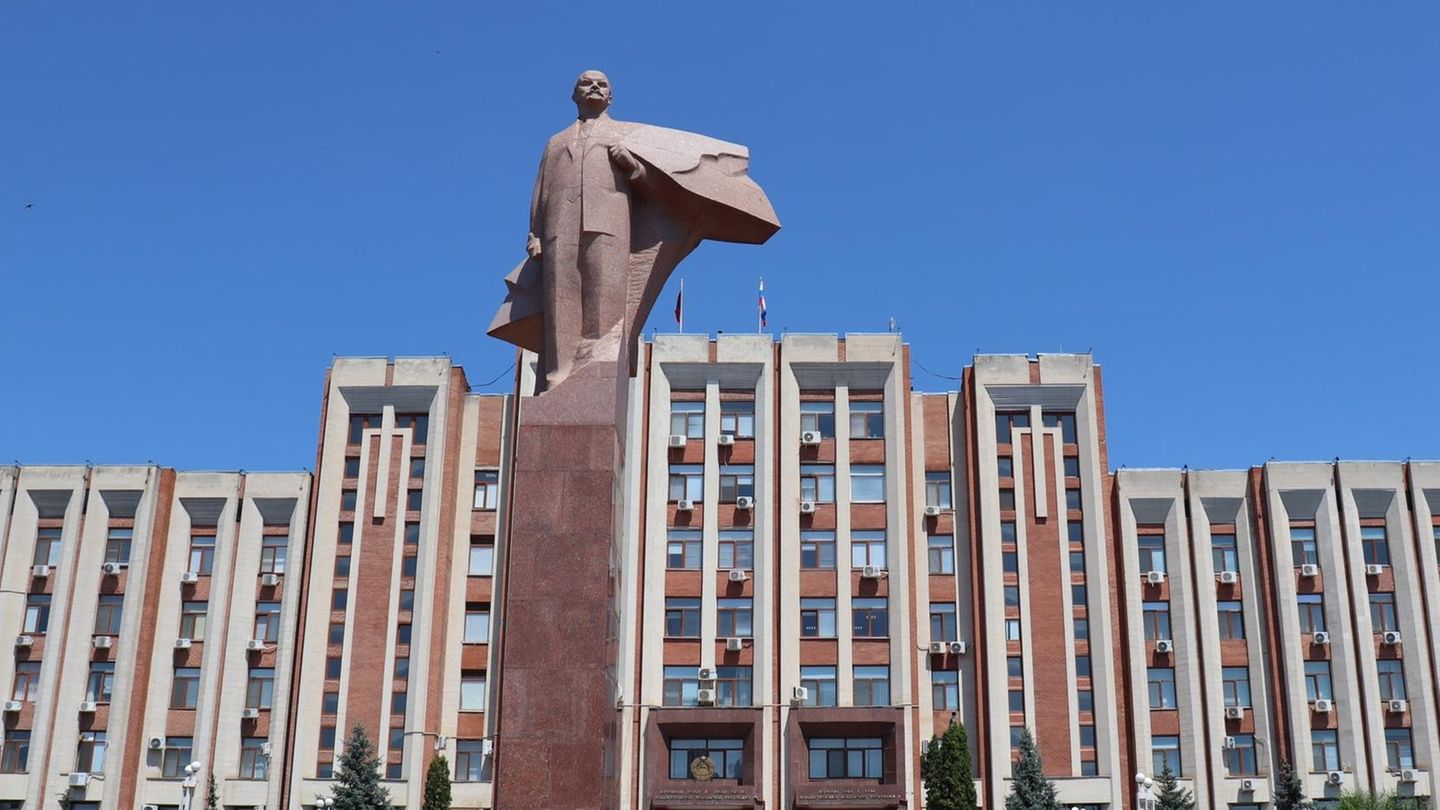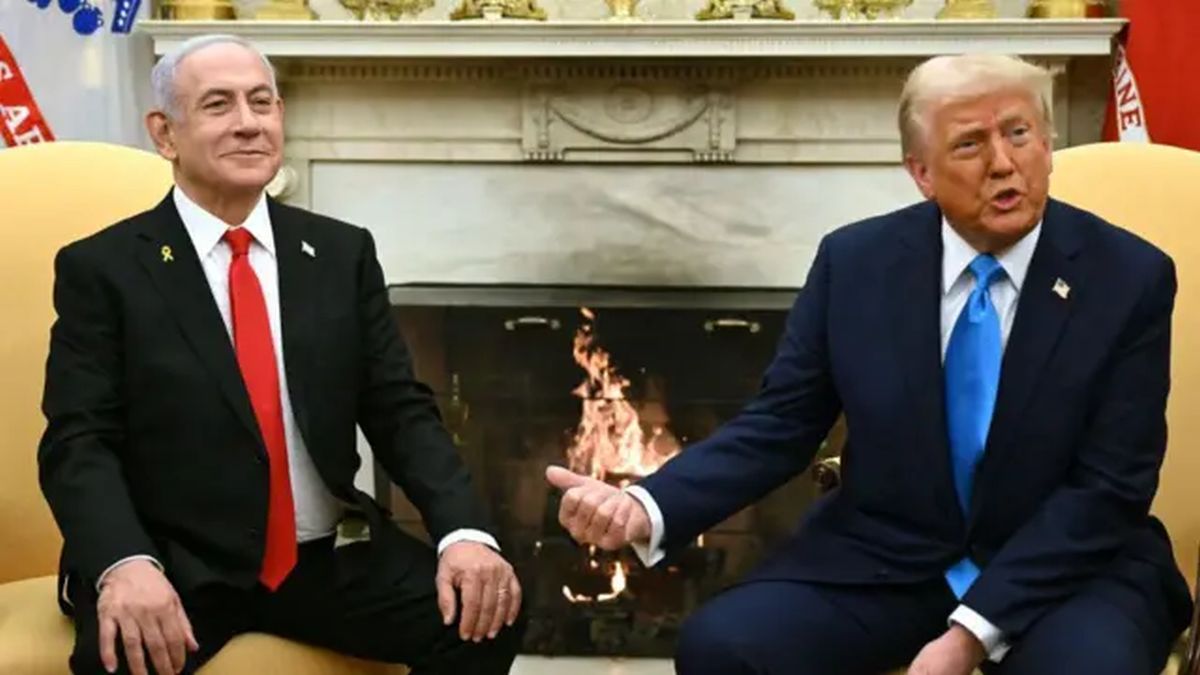Easily explained
The east of Moldova, Transnistria, has been controlled by separatists for many years, over which Moscow has its hand. Now the area has requested Russia’s “protection.” Transnistria – simply explained.
By Gregor Scheu
Where is Transnistria?
Transnistria is an approximately 200 kilometer long strip of land in the east of Moldova. At 4,000 square kilometers, Transnistria is about 1.5 times larger than Luxembourg. The region borders directly on the south of Ukraine and, at its southernmost point, is only a few hundred kilometers from the Russian-occupied Crimean peninsula. Around 350,000 people live in the region, 150,000 of them in the capital Tiraspol.
What is the history of the region?
After the end of World War II, Moldova, the country from which Transnistria would later secede, joined the Soviet Union. During this time, a gradual process of Russification began, particularly in the east of the country. The influence of the Russian language and Russian culture increased little by little. Russian became the country’s official language alongside Romanian. Those who wanted to make a career in the state were forced to speak Russian and not Romanian due to the proximity to Russia and the Soviet Union. This is how a predominantly Russian-speaking elite developed in the country.
The country’s economic development also drove a wedge between East and West. During the Soviet era, the Transnistria region developed into Moldova’s economic backbone. Although only 15 percent of the country’s population lived in the area, 40 percent of the gross domestic product was generated here and almost all of the country’s electricity was generated here. Due to the region’s economic boom, people from all parts of the Soviet Union settled in Transnistria. People of Moldovan origin were gradually pushed out of the East until, in 1989, they were even in the minority. As part of Mikhail Gorbachev’s reform policy, there was a rapid increase in nationalist aspirations throughout the Soviet Union in the 1980s, including in Moldova. However, the Transnistria region in particular felt more attached to Russia and the Soviet Union than to an independent Moldova.
When the Soviet Union finally collapsed and Moldova withdrew from the Soviet Union, open conflict broke out between East and West. In a symbolic act, Moldova’s new political leadership removed Russian as its official language, even though large parts of the country spoke Russian natively. Due to the nationalist policies of the new Moldovan government, sections of the population from the East in particular saw their rights as threatened and ultimately declared themselves independent. Not least because of the industry and economy based there, the newly formed Republic of Moldova was not prepared to accept the secession of Transnistria. There was a military conflict, the Transnistrian conflict.
How did the conflict go?
The conflict lasted from 1990 to 1992. While initially it was primarily political, the situation finally escalated in March 1992. Military forces in the breakaway region of Transnistria attempted to take the last of the territories they claimed that were still controlled by the Republic of Moldova. The result of these advances was an open civil war between the Republic of Moldova and the Transnistria region. Moldova assembled an army of around 20,000 soldiers for the conflict, consisting primarily of inexperienced recruits, volunteers and police officers. There were several clashes in the Transnistrian border area, resulting in a total of 500 deaths.
The conflict was finally ended by military intervention by Russia. The Russian 14th Army, which was still stationed in Transnistria at the time, took sides with the Transnistria region. The military superiority of the Russian armed forces ended the military phase of the conflict almost immediately. The defeated troops of Moldova withdrew. The Moldovan government then sharply criticized Russia for having unlawfully participated in the conflict. Nevertheless, Moldova agreed to a ceasefire in July 1992. The conflict has been considered frozen since then. In fact, the Republic of Moldova has lost its control over the Transnistria region as a result of the conflict.
What is the status quo in Transnistria?
In 1992, the Transnistria region declared itself independent and held its own elections. However, the country is heavily dependent on economic and military support from Russia. No other country has recognized Transnistria’s independence from Moldova. From the perspective of international law, the region still belongs to Moldova. Nevertheless, Transnistria has been trying to consolidate its state structures since its creation. The country now has its own currency, its own passports and independent administrative bodies.
The continued existence of Transnistria is secured primarily by the Russian troops stationed there. Although Russia committed to withdrawing all armed forces from Transnistria in 1999, it has not fulfilled this obligation to date. In 2014, shortly after Russia’s annexation of Crimea in violation of international law, Transnistria submitted an official application to join the Russian Federation. However, the separatists withdrew this after Moscow signaled that it initially wanted to concentrate fully on Crimea.
Recently, the political leadership in Transnistria made headlines again by reaching out to Moscow. In an official statement, Transnistria asks Russia for “protection” against what it says is increasing pressure from Moldova. The separatists accuse the Republic of Moldova of, among other things, an economic blockade of the region, which would result in the “destruction of the foundations of independence and statehood.” According to this statement, there are 220,000 Russian citizens in Transnistria who are dependent on protection from Russia. What specific measures the separatists in Transnistria are demanding from the Russian state remains unclear.
What does Russia want in Transnistria?
Russia never completely gave up its influence on Transnistria and thus on Moldova, even after the collapse of the Soviet Union. Moscow also keeps the region alive economically. The government of the separatist region is essentially a political puppet of Moscow. It can be assumed that no far-reaching political decisions will be made in Transnistria that have not previously been approved by Putin and his government. This particularly applies to the high-profile request for “protection” from Moldova.
This request from the Transnistrian population, which in Putin’s eyes is of Russian origin, gives Putin the tools in both domestic and foreign policy to take a more active role in the frozen conflict with Moldova and to no longer limit his imperial plans just to Ukraine. The approach is strongly reminiscent of the situation in Ukraine shortly before Russia’s attack in 2022. Here, too, separatists in the east of the country turned to Russia and asked for help against Ukraine’s oppression of the population of Russian origin. Russia’s attack followed shortly afterwards.
Although an immediate entry of Russian troops into Moldova in response to Transnistria’s request is considered unlikely, experts are increasingly concerned about how Russia plans to handle the situation. In the short term, it is assumed that Russia wants to politically destabilize the Republic of Moldova and break the burgeoning influence of the West there. In the long term, efforts in Transnistria could aim to make all of Moldova part of Russia again.
Source: Stern
I have been working in the news industry for over 6 years, first as a reporter and now as an editor. I have covered politics extensively, and my work has appeared in major newspapers and online news outlets around the world. In addition to my writing, I also contribute regularly to 24 Hours World.




